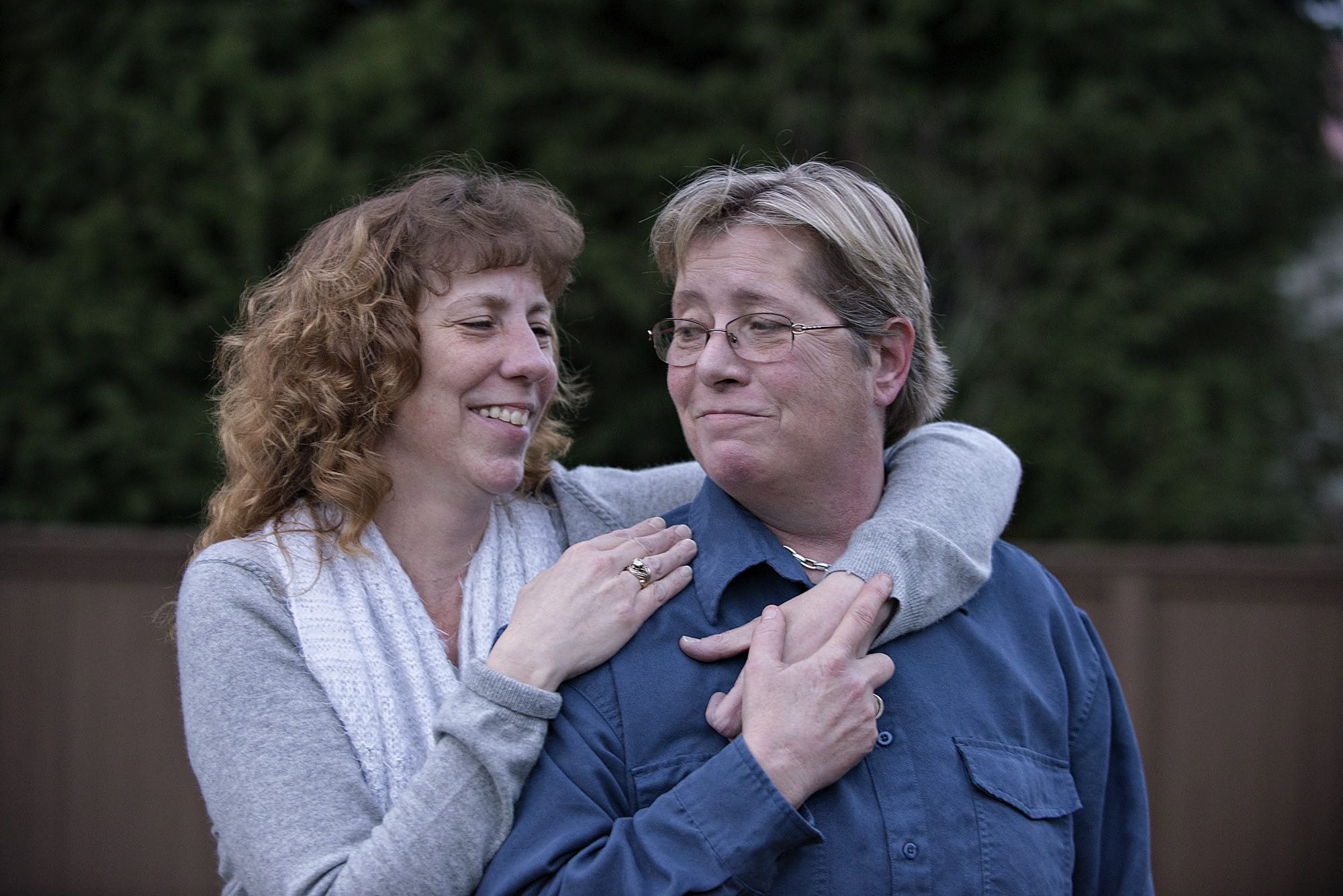Lana Hall remembers pulling the cord to start her chain saw that March day in 2014. She remembers grabbing the saw in her left hand and an ax in her right hand. And she remembers walking across the yard of her Yacolt home toward the large tree she planned to cut down.
She remembers the sudden pain in her hand. She remembers hearing her heartbeat, slowing to the point Lana was sure she was dying. She remembers feeling the most severe pain in her head that she’s ever experienced.
“I remember Leanne walking up to me, walking me to the porch, and then I blacked out for the next seven months,” Lana said. “Gone.”
Lana and her wife, Leanne Hall, would later learn that a massive aneurysm in Lana’s brain had ruptured when she pulled that chain saw cord — a movement she had performed dozens of times before.




